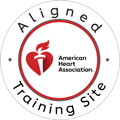Choking emergencies can turn life-threatening within minutes, making it critical to act quickly and correctly. When a person is choking, their airway is blocked, preventing oxygen from reaching the lungs and brain. If the obstruction is not cleared in time, the individual can lose consciousness, leading to cardiac arrest. Understanding the proper steps to take in such situations can mean the difference between life and death.
One of the most important aspects of handling a choking emergency is knowing what to do before attempting to give breaths. While rescue breaths are an essential part of CPR, certain steps must be taken first to ensure they are effective. In this article, we will outline the proper actions to take before administering breaths to an unresponsive choking person.

Recognizing an Unresponsive Choking Victim
Recognizing an unresponsive choking victim is the first step in providing effective aid. When a person is experiencing severe choking, they may be unable to speak, cough, or breathe. In many cases, they will clutch their throat—a universal sign of choking. If the obstruction is not cleared, the person may lose consciousness due to a lack of oxygen.
Call Us Now
Get the Best CPR Class in Indianapolis Today!
Immediate Steps Before Giving Breaths
Once a person becomes unresponsive, it is crucial to check for responsiveness immediately. Gently tap the person and shout their name to see if they respond. If they do not react, they are likely unconscious and need urgent medical intervention. At this stage, you must act fast to restore airflow and keep blood circulating to vital organs.
Call for Emergency Help
Before giving breaths, the first step is to call for emergency help. Dial 911 yourself or instruct someone nearby to do so. Time is critical in choking situations, and having emergency responders on the way increases the chances of survival. While waiting for medical professionals, you must begin resuscitation efforts without delay.
Begin Chest Compressions First
The next step is to initiate chest compressions. Unlike in standard CPR, where breaths are given first, in choking situations, compressions take priority. The force generated by chest compressions can help dislodge the object obstructing the airway.
Check for Obstruction in the Mouth
To perform chest compressions effectively, place the heel of one hand on the center of the person’s chest, just below the sternum. Place the other hand on top, interlock the fingers, and keep your elbows straight. Push hard and fast, aiming for a compression depth of at least two inches. Follow a rate of 100–120 compressions per minute, allowing the chest to fully recoil between each compression.
Attempt Rescue Breaths
After completing 30 chest compressions, check the person’s mouth for visible obstructions. If you see an object that can be easily removed, carefully take it out. However, avoid blind finger sweeps, as this can push the object further into the airway, making the blockage worse. If the airway remains blocked, do not attempt breaths yet—resume compressions instead.
What to Do if Breaths Do Not Go In
If the airway is clear, it is time to attempt rescue breaths. Proper airway positioning is crucial for effective ventilation. Use the head tilt-chin lift maneuver to open the airway: place one hand on the person’s forehead, tilt the head back slightly, and use the fingers of your other hand to lift the chin. This movement helps to open the airway and allows air to pass into the lungs.
Deliver two slow, steady breaths into the person’s mouth, watching for the chest to rise. If the chest does not rise, the airway may still be blocked. In this case, reposition the head and attempt another breath. If the breaths still do not go in, immediately return to chest compressions and continue the cycle of compressions and breaths until the obstruction is cleared or emergency responders arrive.
If an obstruction remains despite multiple attempts, do not give up. Consistently alternating between compressions, airway checks, and rescue breaths can help dislodge the object over time. CPR should be continued without interruption until the person starts breathing on their own or medical professionals take over.
Importance of CPR and First Aid Training
Knowing the correct steps to take before giving breaths in a choking emergency underscores the importance of CPR and first aid training. Many people hesitate during emergencies because they lack confidence in their skills. However, proper CPR training provides the knowledge and hands-on practice needed to respond effectively in life-threatening situations.
Organizations like CPR Indianapolis offer comprehensive training in Basic Life Support (BLS), Advanced Cardiovascular Life Support (ACLS), Pediatric Advanced Life Support (PALS), and First Aid. These courses are designed to teach individuals how to perform CPR correctly, clear airway obstructions, and administer life-saving techniques in real-world scenarios.
By participating in hands-on training, individuals gain the skills needed to act quickly and confidently when faced with a medical emergency. CPR Indianapolis provides a stress-free learning environment, ensuring that every participant walks away fully prepared to handle choking incidents and other critical situations.
Conclusion
Understanding what to do before giving breaths to an unresponsive choking person is crucial for saving lives. The key steps include recognizing the emergency, calling for help, starting chest compressions immediately, checking for visible obstructions, and attempting rescue breaths only when the airway is clear.
The best way to be prepared for such emergencies is to undergo professional CPR training. Whether you are a healthcare provider, teacher, parent, or concerned bystander, having the skills to respond to a choking emergency can make all the difference. Take the initiative to learn CPR today—enroll in a course at CPR Indianapolis and equip yourself with the knowledge to save lives.


